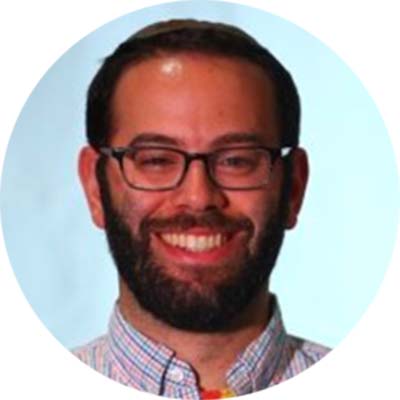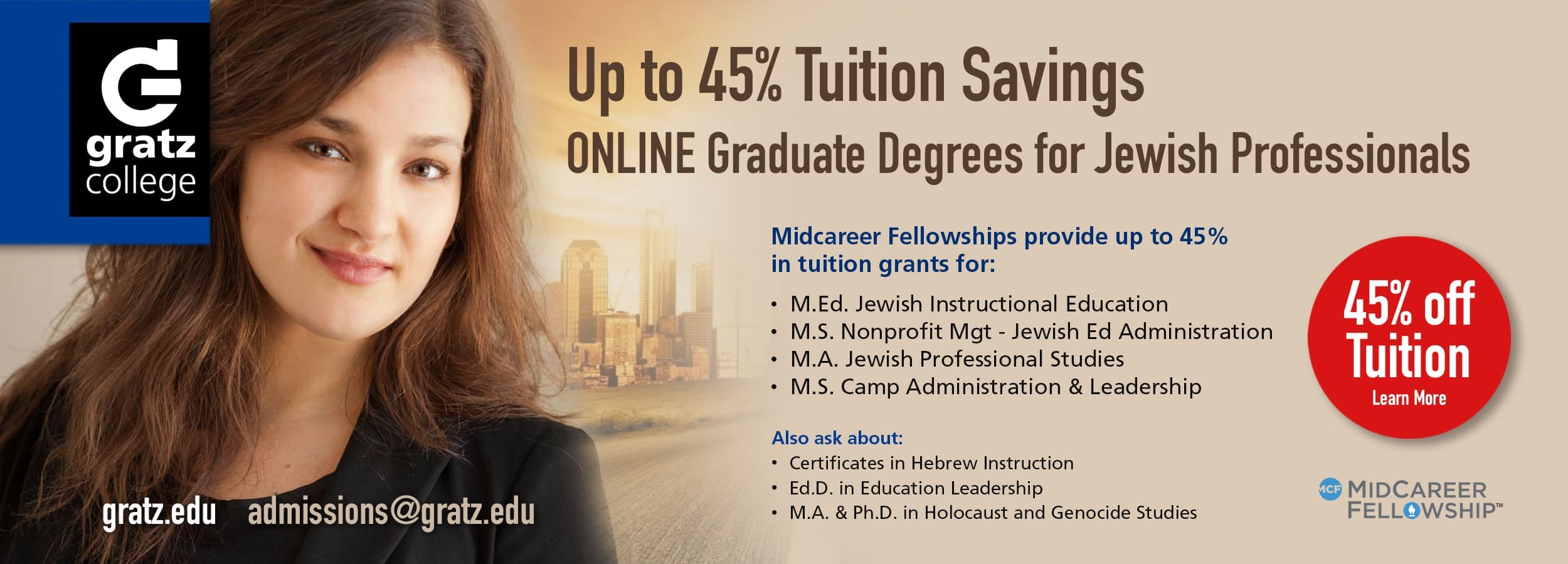Creating meaningful, well-rounded learning experiences is essential for all students. The opening mishnah in Pirkei Avot describes Moses as “receiving the Torah from Mount Sinai.” In the Torah, the Sinai experience was immersive and multi-sensory—sights and sounds, wonder and awe, and who knows what else. Today’s students need more Sinai-like learning that can fuel their passion and independence, and teach them to work hard to build the skills necessary to truly own their learning. That ownership helps students to become what futurist Alvin Toffler describes as being literate in the future—the ability to learn, unlearn, and relearn.
For the past eight years, I have been working in and around faith-based makerspaces. In the faith-based environment of the Jewish day school, where I have invested the bulk of my energies, I argue that at the core of the Human, particularly the Jew lies a creative imperative. As for makerspaces, for those of you who have never been to or seen a makerspace, imagine taking a computer lab, a welding studio, a robotics lab, and a woodworking shop, and combining them with all the crafts and cardboard that we can muster—that is a makerspace in a nutshell. It’s a place for teachers, students, and parents to come together and apply their classroom learning to real-world problems using real-world tools. It is not a place for those who need things to progress systematically and smoothly. We try new things; it gets messy. We fail often, but we also grow and learn a tremendous amount in the process. It expresses a pedagogical style firmly rooted in the Constructivism and Constructionism approaches to learning. Prima facie, the concept of a makerspace is daunting—it can be scary, but with baby steps and a real framework, its principles can be imbued into any classroom, with or without an actual makerspace.
All of these ideas sharpened for me as I re-examined my teaching in light of the pandemic. Listening to my students it became clear that they needed their learning to be hands-on, that they needed things to feel real, and that they needed less screen time, not more. My goals for them fell into three main areas that I wanted them to develop: the ability to be self-directed learners, the confidence to create a self-paced learning schedule, and the knowledge that their learning has real-world impact.
Creating the framework to support these goals was a challenge. I knew that it couldn’t happen all at once and that I could not bring about a complete upheaval of the current curriculum. In my work as an educational technologist, part of me needs to be able to imagine what will continue to support education down the line while evaluating what students and teachers are actually ready to embrace now; too fast and people don’t get it, too slow and people aren’t excited. I created space in my classes for students to explore the material that we need to cover by creating project-based learning modules as well as a series of in-class “professional” learning cohorts (PLCs). I established a number of journaling and self-reflection protocols for my students and leaned heavily on canva.com to create beautiful support material because as my students and I agreed, anything worth doing is worth doing beautifully. Every module and assessment that my students had, whether it be hevruta learning or tests or projects, had a self-reflection tool attached to it.
Arguably the hardest bit to accomplish was to create an environment in which my students had the confidence to create and learn independently. I chose to borrow an idea that the LEGO Education group has been doing work on in the arena of confidence in education. My students were given the option of joining one of three PLCs: the 3D Printing and Judaica Cohort, the Tikun Tech Fellows, or the Halakhic Makers Group. Each of these groups had a distinct goal in our community, whether it be exploring their connection to religious items, fixing technology at school, or contemplating and recording halakhic/hashkafic approaches to the use of technology. Each student discovered the challenges that they wanted to explore while balancing the real demands of their skills.
One of the most successful simple shifts I made in my teaching that addressed the goal of real-world consequences was to build off an idea that I saw a general studies counterpart of mine employ years ago. Many of my students were familiar with the concept of text-to-text connections, text-to-world connections, or text-to-self connections where students examined a text they were learning and tried to make connections to it. In our class, we expanded the concept to text-to-media creation, text-to-problem creations, and text-to-creation creations. Students would be challenged, sometimes from me and sometimes from each other to identify a problem of practice in the world that needed addressing based on the texts we were learning. Rubrics were used to help guide and focus our work, but not as the ultimate arbiters in these projects. It was helpful for students to have a familiar grading paradigm even as they took on open-ended projects. My students quickly realized coming up with independent ideas was hard but not impossible, and therefore not an unreasonable requirement.
To support my students’ independent learning, I adapted from a platform called HITRecord.com, where people make public what they are working on and freely collaborate with each other on ideas. I highly recommend checking out the platform, but for our purposes, we created what I called the Tzei U’lemad (go and learn) board. Initially, this was a simple Google Spreadsheet. Students would post what they were learning, what they were struggling with, and what their goals were. As we went on, it evolved in both my Torah and engineering classes to something much bigger. Students would come into my class and write on a physical board what they were working on, including its implications and how they could use help. Other students would see how they could fill in the gaps of their peers’ learning or projects. Sometimes a student would propose an idea and offer help without the initial student asking for help. This was a pivotal moment of my students owning their learning. They set their own pace and they collaborated, knowing full well I was going to ask them for reflection pages at the end of the process.
When we stack these next to each other, it’s hard to think of this as not having totally upended the way I was teaching my classes. The truth is that these began as side initiatives, alternative assessments, bite-sized challenges, and activities that were coupled with a traditional model of learning. We were inspired by what we were doing in class, and I was motivated by what I had learned from the Rebbe of Piacesna, a radical thinker in pre-WWII Europe. He writes:
An educator, however, who wishes to uncover the soul of the child that lies hidden and concealed within him, who wants to help it grow and to ignite it so it will burn with heavenly fire, upwards, towards the holy, so that the students entire being, including his physical body, will increase in holiness and will long for God’s Torah, such an educator must adapt himself attentively to the students, must penetrate into the midst of his limited consciousness and small mindedness, until he reaches the hidden soul-spark. Then he can help it emerge, blossom, and grow.
My goal as an educator has always been to be flexible enough to look for even the smallest new ways to reinvigorate the souls of our students. We will hopefully continue to inspire and challenge our students to continue progressing in their learning, whether that be on Zoom, in person, but most importantly, long after they have left the walls of our classrooms.

Tzvi Hametz is the director of Educational Technology and STEM Innovation at the Berman Hebrew Academy in Rockville, Maryland. Rabbi Hametz is also the founder of Bottled Lightning Labs, a consultancy that develops makerspace training, and works with the LEGO Education company. He attended Yeshiva University, American Jewish University, MIT, and RIETS.
Reach 10,000 Jewish educational professionals. Advertise in the upcoming issue of Jewish Educational Leadership.





